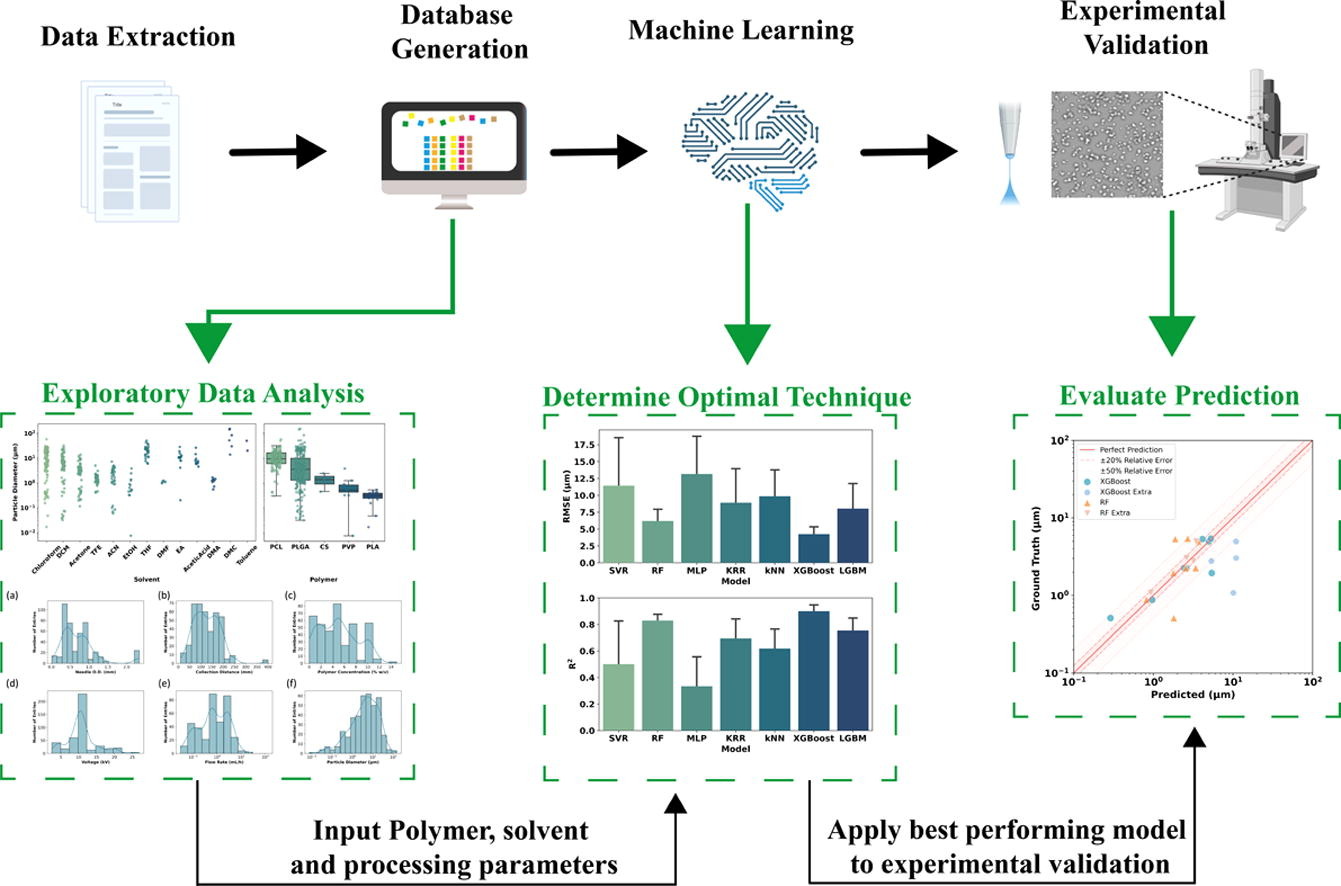Machine Learning Predicts Electrospray Particle Size

Electrospraying (ES) is a state-of-the-art processing technique with the promise of achieving key nanotechnology and contemporary manufacturing needs. As a versatile technique, ES can produce particles with different sizes, morphologies, and porosities by tuning a list of experiment parameters. However, this level of precision demands an exhaustive trial-and-error approach, at high costs and heavily relies on processing expertise. The present study demonstrates how machine learning (ML) can expedite the optimization process by accurately predicting particle diameter, for both nano- and micron-sized particles. This was achieved by constructing an informative electrospraying database containing 445 records from the literature, followed by the development of predictive ML models.
Highlights
• Machine learning models predicting electrospraying particle size were developed from a literature database of 445 records.
• XGBoost and Random Forest (RF) models yielded root-mean-squared errors (RMSE) of 3.91 μm and 6.19 μm evaluated by 5-fold cross-validation (CV).
• In-house experiments validated the models, revealing an accuracy of ± 1.3 µm and providing insight into model generalisation capability.
• Models successfully predicted electrospray processing attributes governing particle size, as previously identified by scaling laws.
Feature engineering techniques were explored, where ultimately it was found that solvent physiochemical properties as the molecular representation and data with imputation provided models the highest performance. The top two models were XGBoost and Random Forest (RF), which yielded root-mean-squared errors (RMSE) of 3.91 μm and 6.19 μm evaluated by 5-fold cross-validation (CV), respectively. These models were experimentally validated in-house with different combinations of experiment parameters, where RMSE between the predicted and actual particle size was found to be 1.30 μm for the XGBoost model and 1.62 μm for the RF model. Therefore, it was concluded that data generated by the ES literature, in addition to being both cost- and material-free, can yield high-performing ML models for predicting particle size. The ML models were also consulted to determine the key processing parameters that govern particle size, where it was concluded that the models learnt similar attributes identified by scaling laws.
Continue reading here
About this article: Fanjin Wang, Moe Elbadawi, Scheilly Liu Tsilova, Simon Gaisford, Abdul W. Basit, Maryam Parhizkar,
Machine Learning Predicts Electrospray Particle Size, Materials & Design, 2022, 110735, ISSN 0264-1275, https://doi.org/10.1016/j.matdes.2022.110735. (https://www.sciencedirect.com/science/article/pii/S0264127522003574)

